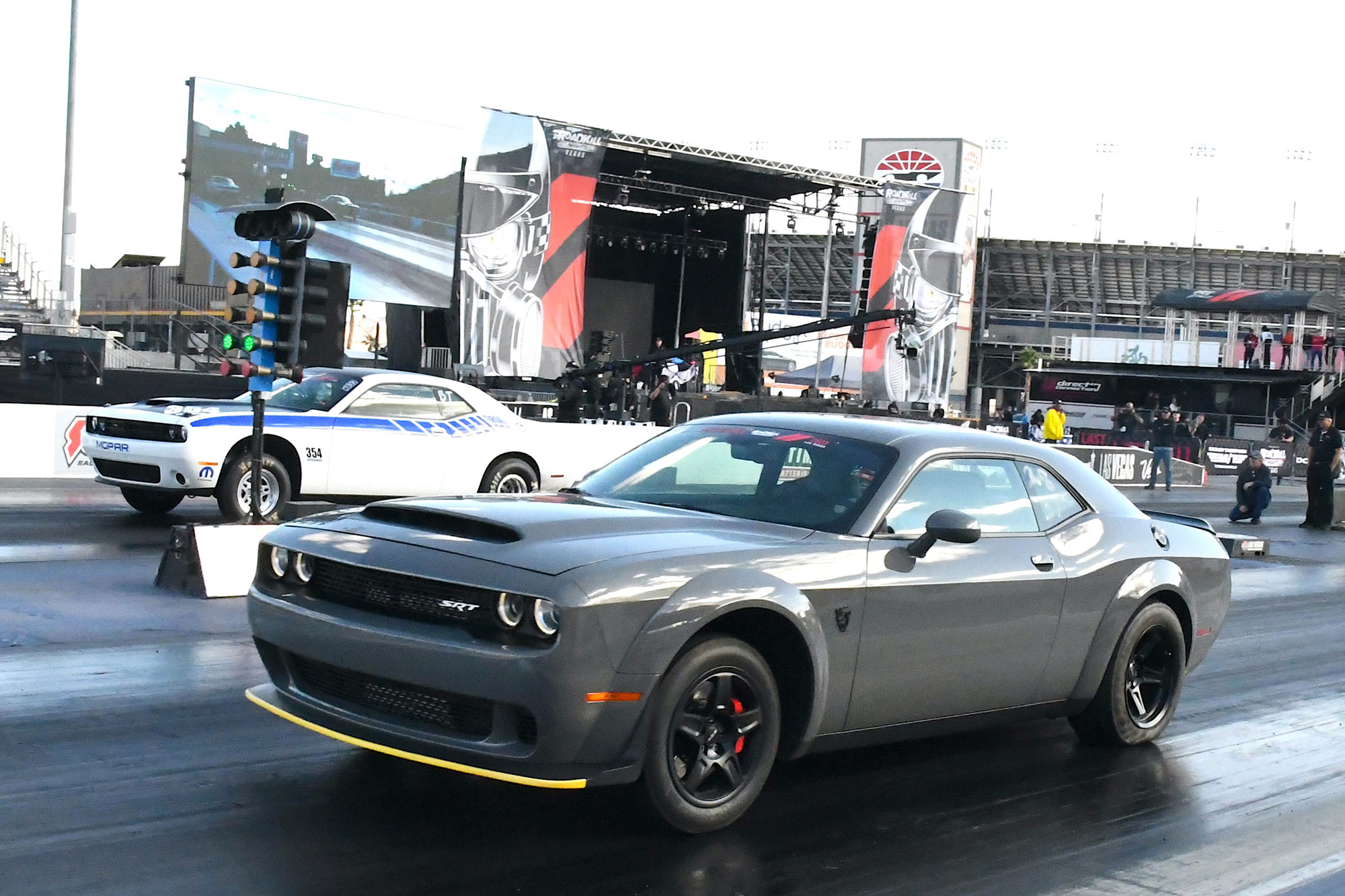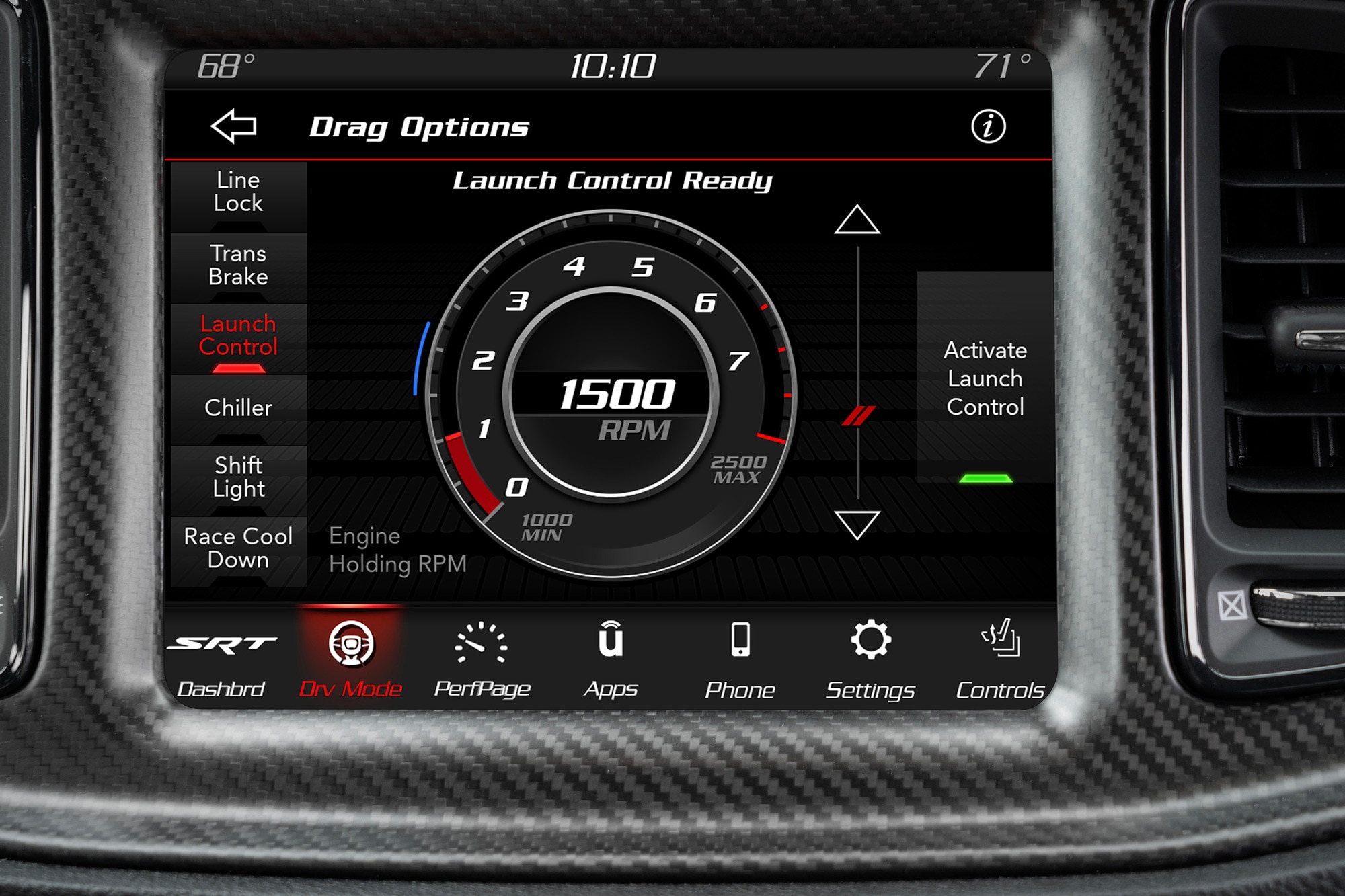Launch Control: A Burst of Speed at Your Fingertips
A high-tech solution to drag strip-style starts is included in many modern vehicles but is best saved for use on a closed track.
 Dodge
Dodge
Launch control allows drivers to take off as quickly as possible from a standstill. It has been a feature of performance vehicles for years, and now it appears in even everyday automobiles.
Do launch-control systems have any practical purpose on public roads? Here's how launch control works and why it should be used carefully.
Launch Control Gets You off the Line in a Hurry
In the past, launch-control systems were limited to high-end, high-performance sports cars such as BMW or Bugatti. They were used to electronically emulate the tactics and technology used on drag strips, where vehicles push many hundreds of horsepower in straight-line speed contests where a hundredth of a second in reaction time makes all the difference.
Nowadays, launch control can be found in everyday vehicles such as the Dodge Durango SRT Hellcat or the Volkswagen Golf GTI. Even some electric cars, such as Tesla's Model S Plaid, include launch control.
While those drivers may not be competing for record times on a track, many carmakers have deemed launch control a bragging right to include in their vehicles.
 Dodge
Dodge
Launch Control Emulates Professional Drag Racers
Professional drag racers achieve fast starts by combining the maximum amount of engine output to the wheels, with a minimum of wheel spin. That's blended with a full brake hold that can be released in the blink of an eye.
Consumer-level launch control mimics those attributes by allowing drivers to safely rev their engines to an electronically controlled redline, while brake systems hold the vehicle until the very last second. When the driver releases the brake pedal, the vehicle can quickly achieve maximum acceleration.
Launch control works with a vehicle's traction-control system to limit wheelspin or unintended burnouts.
Activate Launch Control With Specific Buttons and Commands
Typically, drivers activate launch control either by pressing a button on the dash or console. In the case of vehicles such as the Dodge Challenger, launch control is accessed through their infotainment or instrument display.
Drivers are recommended to keep a firm foot on the brake while giving the vehicle as much gas as possible, bringing the engine revs near the redline. Once the vehicle signals it's ready, release the brake and hang on!
The vehicle will more easily achieve all the acceleration it's built to provide, which can be a thrilling prospect in off-the-showroom-floor automobiles that can now reach upward of 1,000 horsepower.
Launch Control Is Only for Controlled Situations
As your manual and on-screen warnings will attest, launch control is strictly for use on closed-track conditions, never on your neighborhood street or a freeway on-ramp. The coordination required for two-pedal holds to do a launch makes it difficult to focus on other traffic, and the potential for disaster elevates in unpredictable circumstances.
Heavy acceleration from a standstill has many potential safety issues, as you may have seen on a professional drag strip. Launch control is an enviable function to tell your friends you've got on your car, but it should only be used in safe, controlled situations such as a sanctioned drag race on a closed course.
Written by humans.
Edited by humans.
 Andy Stonehouse
Andy StonehouseAndy Stonehouse literally fell into the world of auto writing while working as a ski-town journalist, and has not looked back since. A childhood spent dealing with the eccentricities of a 1976 MG Midget has made any subsequent auto experience a more safe and reliable drive. He has been blessed with nearby mountain trails and snowy roads in Colorado to do TV-adventure-styled test drives on a weekly basis.
Related articles
View more related articles